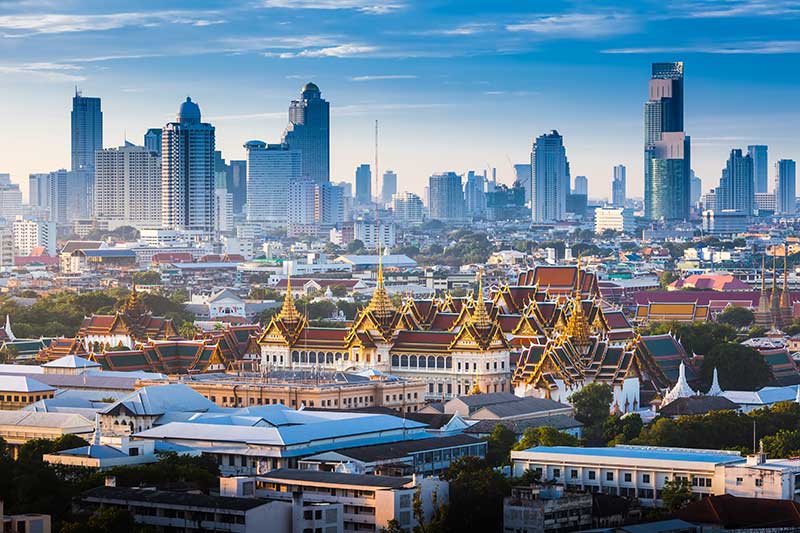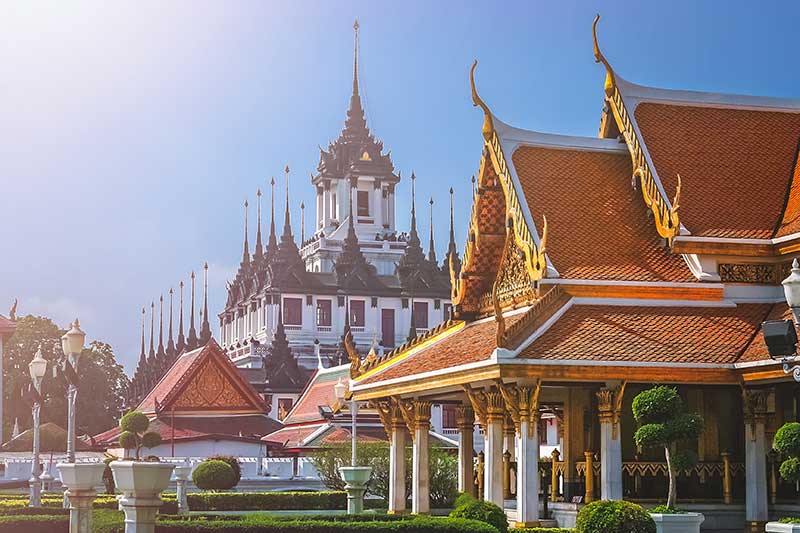One of the Crown Jewels of Thai Architecture is the Grand Palace.
One of the most well-known structures in all of Thailand is the Grand Palace, which can be found in the middle of Bangkok’s bustling city center. This majestic collection of buildings was constructed in 1782 and has been the official residence of the King of Thailand and the Royal Court of Thailand for more than 150 years. To this day, it continues to serve as a representation of the abundant cultural heritage of Thailand and draws millions of tourists each year.
The Grand Palace encompasses an area of more than 200,000 square meters and is comprised of a large collection of structures and temples. It is encircled by walls that are about two kilometers in length and has a great number of structures, including halls, pavilions, and buildings, each of which has its own distinctive design and architecture. Intricate embellishments, golden roofs, and decorative elements that highlight the country’s rich cultural past can be found throughout the palace’s design, which is a fusion of architectural styles that are traditional in Thailand and European in origin.

The Wat Phra Kaew, also known as the Temple of the Emerald Buddha, is one of the most important structures that can be found within the Grand Palace complex. The Emerald Buddha, which is considered to be the most treasured Buddha image in Thailand, can be found within this temple, which is often considered to be the holiest temple in all of Thailand. While it is only 66 centimeters in height and is carved from a single piece of jade, this statue is regarded as one of the most valuable gems in Thailand. There are elaborate carvings, vibrant murals, and shimmering mosaics covering every inch of the temple’s walls and ceilings. The temple is a remarkable example of Thai architecture.
The Chakri Maha Prasat Throne Hall is yet another impressive structure located inside the grounds of the Grand Palace. This structure dates back to the 19th century and currently serves as the official palace of the King of Thailand. The structure is a fusion of Thai and European architectural traditions, and it is embellished with ornate ornaments like as complex carvings and roofs that have been gilded. It also has a high central spire. An exhibition of royal regalia, including the throne and crown jewels of the Thai king, is currently on display in the Chakri Maha Prasat Throne Hall, which is open to the public.
In addition, the Grand Palace is home to a number of museums and galleries that highlight the diverse cultural and historical heritage of Thailand. For instance, the Queen Sirikit Museum of Textiles houses a collection of traditional Thai textiles, such as ornate silk outfits and intricately embroidered fabrics. On the other side, the Coin Museum exhibits Thailand’s coinage over the ages, including ancient coins from the Sukhothai period and modern-day banknotes. This museum is located in Bangkok.
When visiting the Grand Palace, guests shouldn’t forget to take some time to wander around the palace’s many stunning courtyards and gardens. The grounds of the palace are adorned with beautiful sculptures, elaborate fountains, and verdant vegetation, all of which contribute to the complex’s overall beauty and allure. The outer walls of the palace are also decorated with vibrant murals that depict episodes from Thai history and folklore.
To summarize, the Grand Palace is a remarkable collection of buildings that stands as a testimony to the abundant cultural history of Thailand. Its jaw-dropping grandeur, rich decorations, and gorgeous gardens make it a must stop for anybody traveling to Bangkok. The Grand Palace is a priceless treasure that should not be missed by everyone, regardless of whether they are interested in history, culture, or simply admire magnificent architecture.

